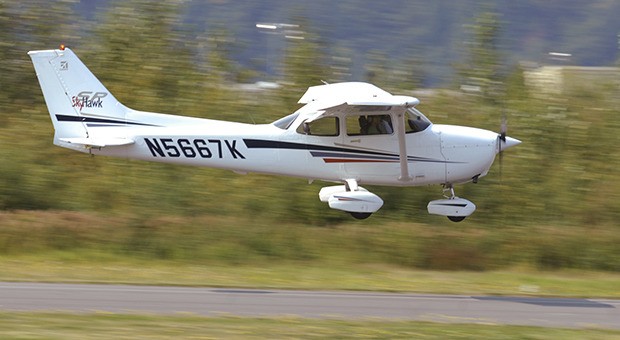Airplanes and animals should never meet each other on or near an airport runway.
But such encounters do happen, and at Auburn Municipal Airport, they seriously freak out pilots trying to land or take off.
Now the Federal Aviation Administration says the City of Auburn needs to deal with birds of the air and beasts of the field.
On Monday, as part of an FAA-sanctioned wildlife depredation program, the City’s Finance Department and the Auburn Police Department asked for and the City Council created an exemption to the City’s “no shoot area” designation that allows, as a last measure, authorized City officials and agents limited discharge of firearms at the airport.
Waterfowl like geese and the threat they pose to persons and property at the airport is an old, familiar issue. But City officials say they only recently learned coyotes were running about on the airport grounds when complaints began popping up about “near-misses” between the animals and aircraft.
While coyotes are known to exist elsewhere inside the city limits, City officials say, this fresh potential for injury to persons or property warrants exemption from Auburn’s prohibition on firearm discharge within city limits.
Beyond the recent reports of animal-aircraft near-encounters, the City has developed a factual basis and a plan for comprehensive wildlife depredation at the airport.
At the request of the FAA, the City commissioned a Wildlife Hazard Assessment (“WHA”), which was in the fact gathering stage between November of 2013 and October of 2014. The City submitted its report to the FAA in February of 2015.
When FAA Administrator Michael Huerta read the report, he determined that there was enough wildlife activity at the airport to require the City to generate a Wildlife Hazard Management Plan (“WHMP”).
The City’s FAA-accepted WHMP sets forth components and requirements that include training of personnel to conduct wildlife depredation and control habitat, the use of wildlife harassment techniques and the use of lethal force if necessary to complement non-lethal measures, such as the use of loud fireworks.
The City’s airport management contractor, the Aviation Management Group, has already sent its staff through FAA-approved training to perform wildlife depredation measures consistent with the WHMP and – relevant to migratory birds like geese – the City now has the necessary permitting from the U.S. Fish and Wildlife Service.
Councilmember Largo Wales asked what kind of noise the airport’s neighbors could expect to hear.
“Typically, they are going to use a .22 caliber, but the preferred weapon with what they are doing is a silenced shotgun,” said Auburn Assistant Police Chief Bill Pierson. “It’s going to have some form of suppression on it to not gain attention.”
Pierson disclosed safety measures the management group plans to employ.
“They don’t want to be shooting up at birds flying in the air and have the trajectory cause a round to go past the birds and into some neighbor’s property. So they’ll be cognizant of their backstop … and probably shoot more towards the ground,” Pierson said.
“Again, it is a last resort; they have several other tactics they are going to use to try to get birds to leave the airport. But the birds that don’t learn, those are the ones they’ll need to perform depredation on.”
Perhaps the major spur to the FAA’s action dates to Jan. 15, 2009, the day US Airways Flight 1549 on its initial climb from LaGuardia Airport in New York made an unpowered emergency landing in the Hudson River after sustaining multiple bird strikes from a flock of Canada geese. Miraculously, nobody died.


